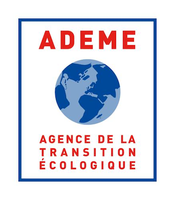Search eceee proceedings
Identifying the Lock-in Effect in the Decarbonization of Residential Sector
Panel: 8. Innovations in products, systems and building technologies
Authors:
Songmin Yu, Germany
Thomas Haupt, Hochschule Ansbach, Germany
Philipp Mascherbauer, Technische Universität Wien, Austria
Jan George, Fraunhofer Institute for Systems and Innovation Research, Germany
Abstract
Decarbonization of the residential sector relies on the households' investment decisions, including renovating the building for higher thermal efficiency, replacing fuel boilers with heat pump, adopting electric vehicle instead of gasoline cars, etc. Besides, investment in PV (and battery) systems can bring households profit by generating "free" electricity and earnings from feed-in tariff. Furthermore, combined with smart energy management systems, the household consumers become prosumagers, and can maximize the synergies among consumption (notably heat pump), PV generation, and energy storage (thermal tank and battery) for lowest overall energy cost.
However, the perfect combination of renovation package and technologies may not come naturally, because all these long-term investment decisions do not happen at the same time, and the households also face budget constraints. As a result, a household can be locked with a gas boiler even when it has the chance to switch to a heat pump. Because it cannot install a PV system, or the thermal efficiency of its building is not high enough to use heat pump while it cannot afford the renovation cost.
In this paper, we try to identify such "lock-in effect" based on an hourly optimization model that covers all the aspects of energy consumption of a household, including electric appliances, space heating, space cooling, hot water, PV, battery, and (electric) vehicle. For any combination of renovation package and technologies, the model optimizes the hourly operation of technologies under given conditions (outdoor temperature, radiation, energy prices, and feed-in tariff), and gives the minimized operational energy cost. Then, by comparing the "minimized cost" of different combinations, we can see the cost change of changing any single renovation package or technology given any existing combination. Furthermore, we can also see potential "lock-in" situations by adding the information of investment cost and budget constraint.
Downloads
Download this presentation as pdf: 8-025-22_Yu_pres.pdf
Panels of
1. Dynamics of consumption: less is more?
2. Efficiency and beyond: innovative energy demand policies
3. Policy, finance and governance
4. Monitoring and evaluation for a wise, just and inclusive transition
5. Towards sustainable and resilient communities
6. Energy-efficient and low-carbon mobility for all
7. Policies and programmes for better buildings
8. Innovations in products, systems and building technologies



























